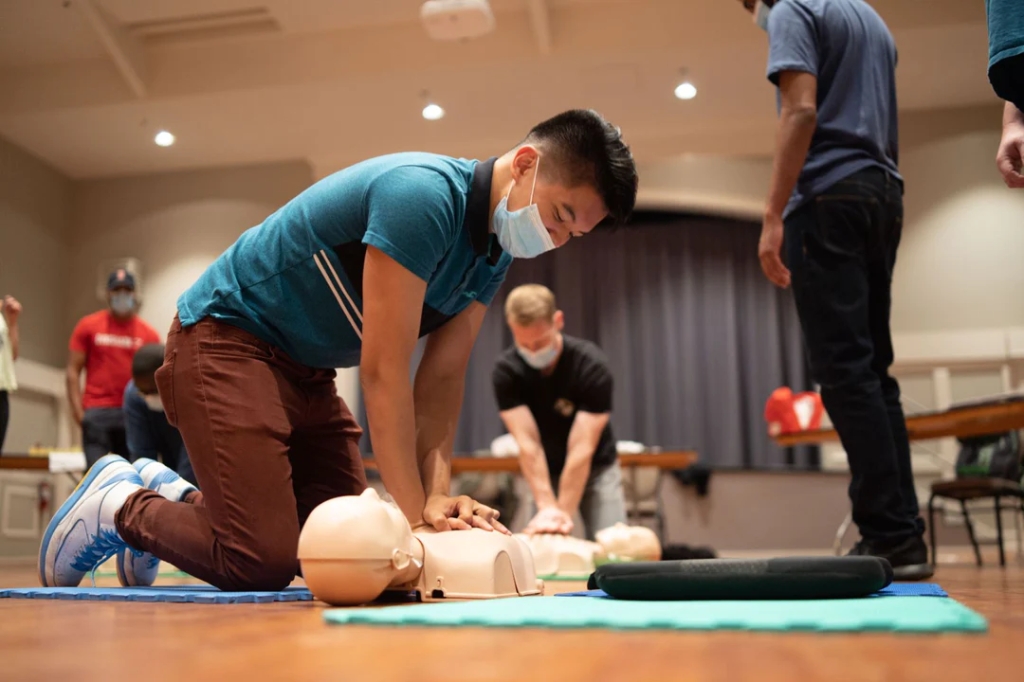
Introduction:
In a fast-paced world, being equipped with life-saving skills like standard first aid and CPR C is invaluable. In this comprehensive guide, we’ll delve into the nuances of standard first aid and CPR C, tailored specifically for Ottawa residents. From understanding the basics to mastering essential techniques, this article aims to empower you to confidently handle emergency situations.
1. Understanding Standard First Aid and CPR C First things first, let’s grasp the fundamentals of standard first aid and CPR C. Knowing what to do in an emergency can make all the difference. Whether it’s administering CPR or treating wounds, having a solid understanding is crucial.
Standard first aid encompasses a range of techniques aimed at providing immediate care to the injured or ill until professional medical help arrives. CPR C, on the other hand, focuses on cardiopulmonary resuscitation for adults, children, and infants. These life-saving skills can be the key to increasing survival rates in critical situations.
2. Importance of Standard First Aid and CPR C Training Why is it essential to undergo standard first aid and CPR C training? The answer lies in the potential to save lives. Emergencies can occur anywhere, anytime, and having the knowledge and confidence to respond effectively can be life-saving.
By investing in standard first aid and CPR C training, individuals not only gain the skills to assist in emergencies but also contribute to creating safer communities. From workplaces to homes and public spaces, trained individuals act as first responders, bridging the gap between an emergency and professional medical assistance.
3. Basic Life Support Techniques Mastering basic life support techniques is at the core of standard first aid and CPR C training. From assessing the scene for safety to performing chest compressions and rescue breaths, each step plays a vital role in stabilizing the patient’s condition.
When faced with an emergency, remember the acronym “ABCDE” – Airway, Breathing, Circulation, Disability, and Exposure. Prioritizing these steps can help systematically assess and address the patient’s needs, ensuring timely and effective care.
4. Recognizing and Responding to Emergencies Emergencies come in various forms, ranging from cardiac arrest to choking and severe bleeding. Recognizing the signs and symptoms of different emergencies is crucial for prompt intervention.
For instance, in cases of cardiac arrest, swift action is paramount. Initiating CPR immediately can significantly improve the chances of survival until professional help arrives. Similarly, knowing how to clear an obstructed airway in a choking victim can prevent a life-threatening situation.
5. Standard First Aid and CPR C Certification Obtaining certification in standard first aid and CPR C not only validates your skills but also instills confidence in your ability to respond effectively in emergencies. Certification courses typically cover a wide range of topics, including CPR techniques, wound care, and basic life support.
By enrolling in a certified training program, individuals gain access to hands-on practice, scenario-based simulations, and expert guidance. Moreover, maintaining certification through regular renewal ensures that skills remain up-to-date with the latest guidelines and best practices.
6. FAQs (Frequently Asked Questions)
How long does standard first aid and CPR C certification last?
Certification typically lasts for one to three years, depending on the provider. It’s essential to renew certification before it expires to ensure continued proficiency.
Can anyone learn standard first aid and CPR C?
Absolutely! Standard first aid and CPR C courses are designed to be accessible to individuals of all backgrounds and ages. Whether you’re a parent, teacher, or healthcare professional, everyone can benefit from learning these life-saving skills.
What’s the difference between CPR A, B, and C?
CPR A focuses on adult victims, CPR B includes techniques for children, and CPR C covers both adults and children, along with infants. Each variant adapts CPR techniques to suit the age and size of the victim.
Do I need to recertify for standard first aid and CPR C?
Yes, recertification is necessary to maintain proficiency and stay updated with the latest guidelines and techniques. Most certification providers offer recertification courses to ensure continued competence.
Can I perform CPR on someone without formal training?
While formal training is recommended, bystander CPR can still make a difference in emergencies. Remember to focus on chest compressions and call for professional help as soon as possible.
Where can I find standard first aid and CPR C courses in Ottawa?
Numerous organizations and training centers offer standard first aid and CPR C courses in Ottawa. From community centers to healthcare facilities, explore local options to find a course that suits your schedule and needs.
Conclusion:
In conclusion, standard first aid and CPR C training are invaluable skills that can save lives. By understanding the basics, mastering essential techniques, and obtaining certification, individuals can become confident first responders in emergencies. Whether it’s administering CPR or providing wound care, every action taken contributes to a safer and more prepared community.
Remember, emergencies can happen when least expected, but with the right knowledge and preparation, you can make a difference. So why wait? Take the first step towards becoming a certified responder today!
Leave a comment